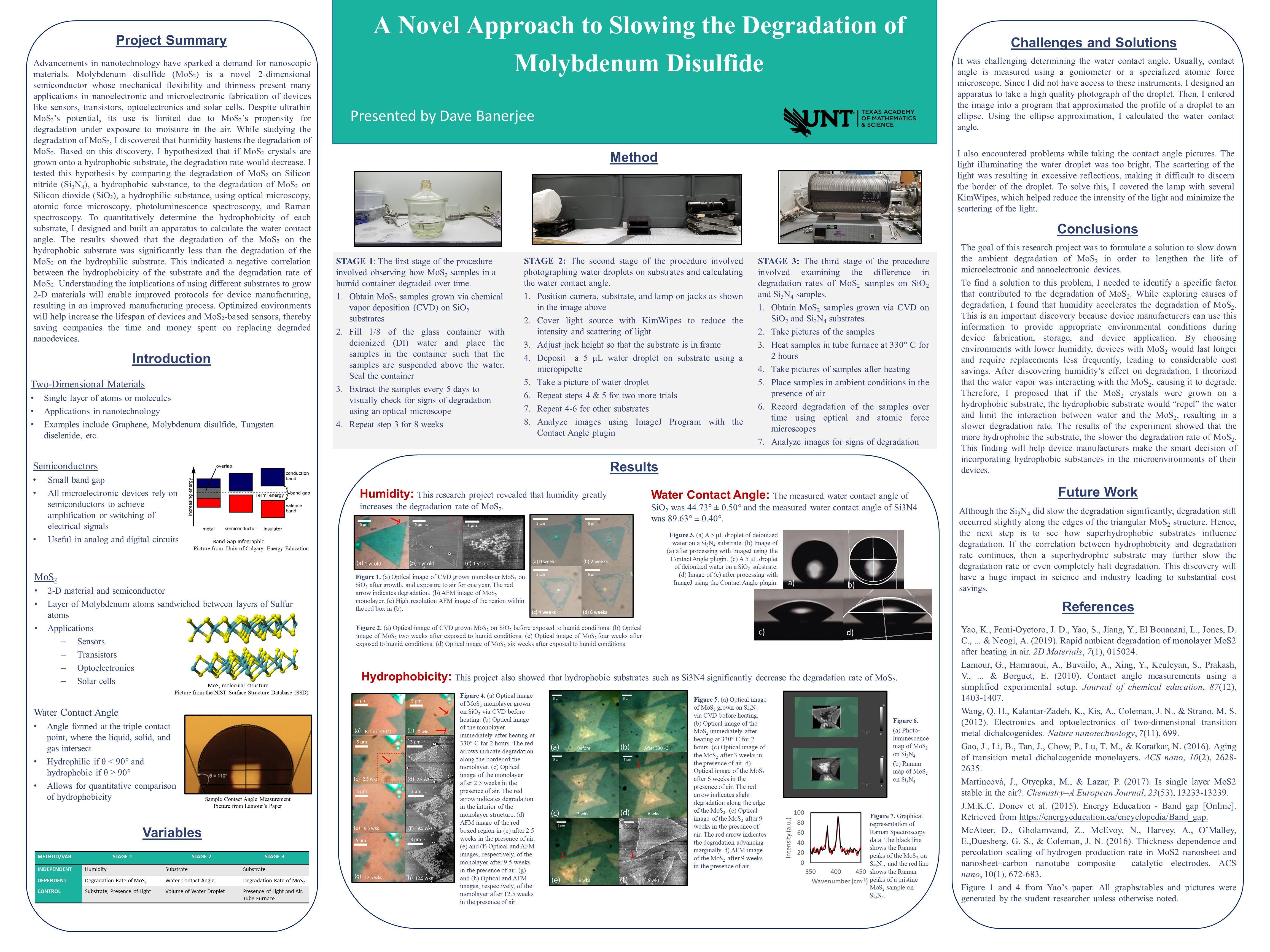First Name:
Dave Last Name:
BanerjeeMentor:
Dr. Jose PerezAbstract:
Advancements in nanotechnology have sparked a demand for nanoscopic materials. Molybdenum disulfide (MoS₂) is a novel 2-dimensional semiconductor whose mechanical flexibility and thinness present many applications in nanoelectronic and microelectronic fabrication of devices like sensors, transistors, optoelectronics, and solar cells. Despite ultrathin MoS₂’s potential, its use is limited due to MoS₂’s propensity for degradation under exposure to moisture in the air. While studying the degradation of MoS₂, I discovered that humidity hastens the degradation of MoS₂. Based on this discovery, I hypothesized that if MoS₂ crystals are grown onto a hydrophobic substrate, the degradation rate would decrease. I tested this hypothesis by comparing the degradation of MoS₂ on Silicon nitride (Si3N4), a hydrophobic substance, to the degradation of MoS₂ on Silicon dioxide (SiO₂), a hydrophilic substance, using optical microscopy, atomic force microscopy, photoluminescence spectroscopy, and Raman spectroscopy. To quantitatively determine the hydrophobicity of each substrate, I designed and built an apparatus to calculate the water contact angle. The results showed that the degradation of the MoS₂ on the hydrophobic substrate was significantly less than the degradation of the MoS₂ on the hydrophilic substrate. This indicated a negative correlation between the hydrophobicity of the substrate and the degradation rate of MoS₂. Understanding the implications of using different substrates to grow 2-D materials will enable improved protocols for device manufacturing, resulting in an improved manufacturing process. Optimized environments will help increase the lifespan of devices and MoS₂-based sensors, thereby saving companies the time and money spent on replacing degraded nanodevices.Poster:

Year:
2021



